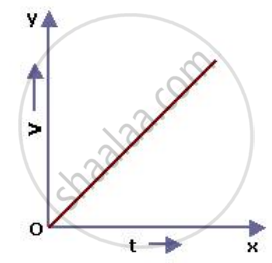Advertisements
Advertisements
प्रश्न
Draw the shape of the velocity-time graph for a body moving with (a) Uniform velocity and (b) Uniform acceleration.
उत्तर

Velocity-time for a body moving with uniform velocity and uniform acceleration .
APPEARS IN
संबंधित प्रश्न
A motorcyclist drives from place A to B with a uniform speed of 30 km h-1 and returns from place B to A with a uniform speed of 20 km h-1. Find his average speed.
An aircraft travelling at 600 km/h accelerates steadily at 10 km/h per second. Taking the speed of sound as 1100 km/h at the aircraft’s altitude, how long will it take to reach the ‘sound barrier’ ?
Write the formula to calculate the speed of a body moving along a circular path. Give the meaning of each symbol which occurs in it.
A car is moving on a straight road with uniform acceleration. The speed of the car varies with time as follows :
Time (s) : 0 2 4 6 8 10
Speed (m/s) : 4 8 12 16 20 24
Draw the speed-time graph by choosing a convenient scale. From this graph :

(1) Calculate the acceleration of the car.
(2) Calculate the distance travelled by the car in 10 seconds.
The diagram below shows the pattern of the oil on the road at a constant rate from a moving car. What information do you get from it about the motion of the car.

For the motion with uniform velocity , how is the distance travelled related to the time ?
A body moves from rest with uniform acceleration and travels 270 m in 3 s. Find the velocity of the body at 10 s after the start.
Define uniform velocity and give one example.
A speeding car changes its velocity from 108 kmh−1 to 36 kmh−1 in 4 s. Calculate its deceleration in
- ms−2
- kmh−2.
How many variables are present in each equation of motion?
